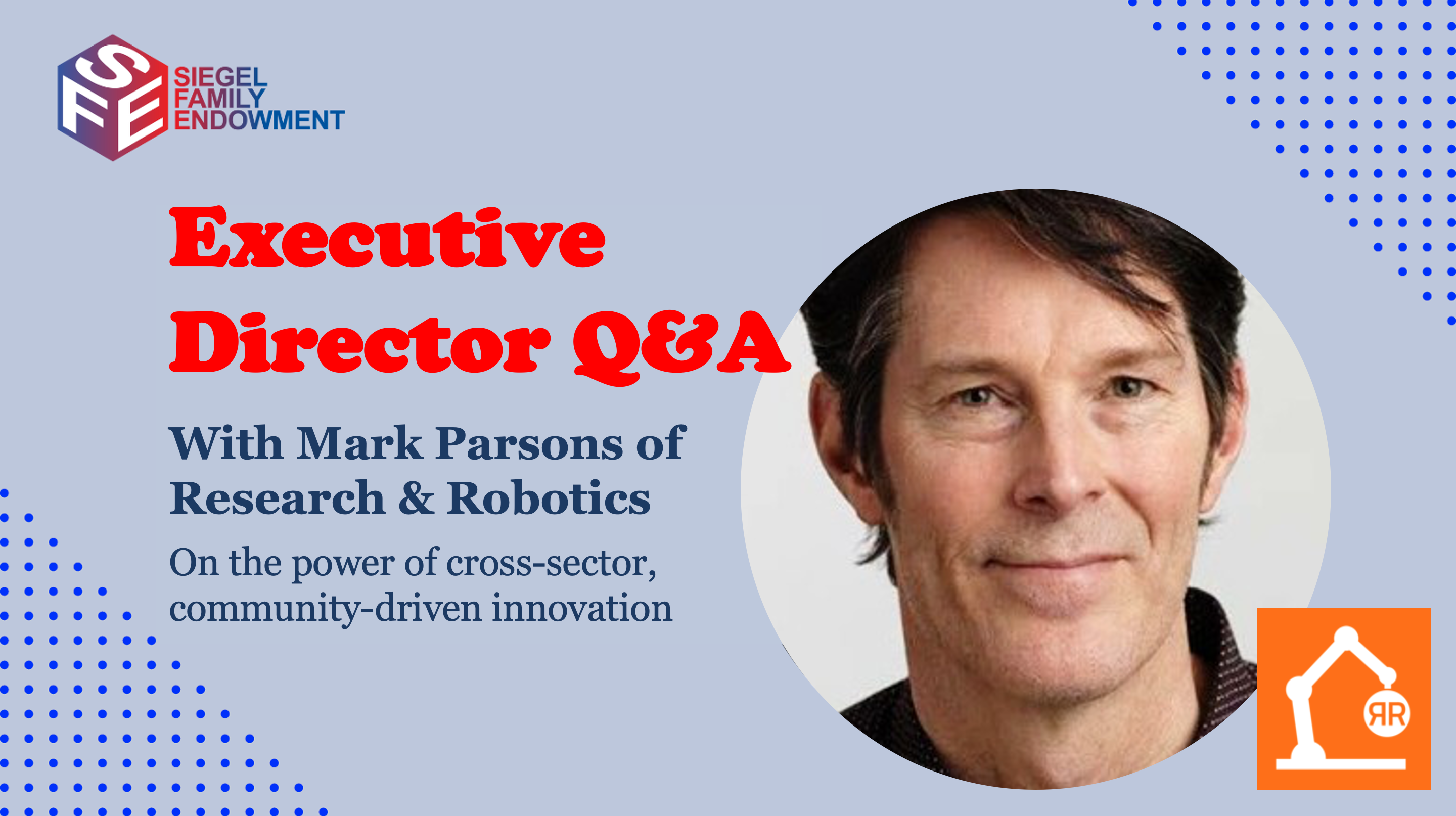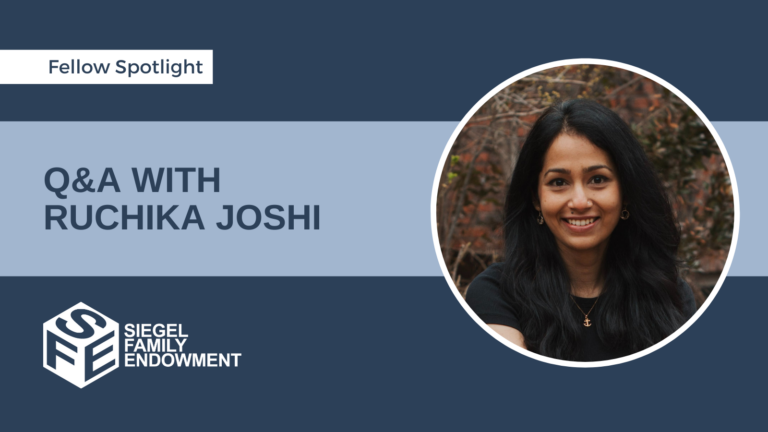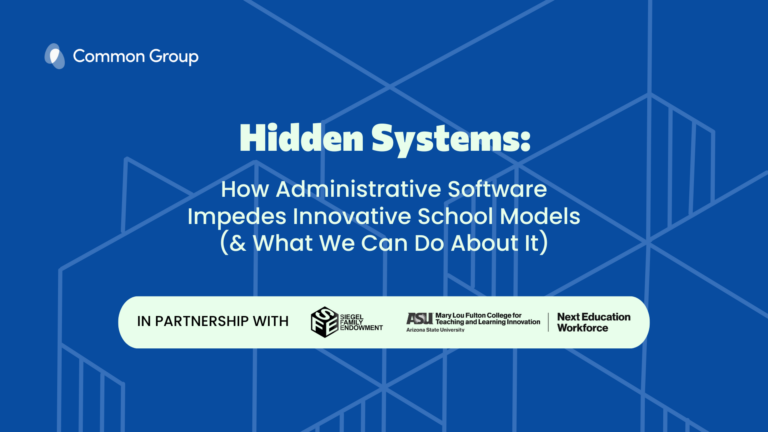
Mark Parsons envisioned and founded the Consortium for Research and Robotics (CRR) in the Brooklyn Navy Yard in 2014, and has since departed to start New Bedford Research and Robotics (NBRR) in New Bedford, MA. NBRR expands upon what made that model successful, allowing for more growth with less constraints. Below is our conversation with Mark reflecting on the success and learnings from the past few years of our partnership.
Tell us about what makes the Research & Robotics model stand out from other similar programs.
It’s not very often that teams from venture-backed startups and Title 1 school kids run experiments using the very same industrial robot. But the Research & Robotics model is designed to make those kinds of overlaps happen all the time, and provides a space where corporate R&D, startups, academic research, community programs, and STEM can come together in the same time and space.
Equitable innovation, education and entrepreneurialism make up this ecosystem. The Research & Robotics method creates intersections across different groups of people and organizations around a shared question: “How will technology change my world?”
Some startups want to be ahead of market and manufacturing disruptions. Other business innovators want to build a better mousetrap. And students and young people want to develop skills that can help them get into college and be successful in their careers. Nobody sets out to become a victim of technology, and it takes active engagement and intention to thrive within today’s innovation economy. CRR and NBRR are accessible spaces that allow folks to overlap, ask, iterate, and innovate around the questions that are most pertinent to them.
How can the Research & Robotics Model drive innovation and economic development across different types of communities that might not otherwise engage with one another?
There is a lot of great work and momentum happening in communities around the country, but it remains in pockets and is often even siloed between sectors in the same location. In that sense, these community innovators are like dispersed flames that aren’t able to join together as part of a bigger movement. Worse, limited opportunities and limited resources make them compete for oxygen.
We use technology creativity as a means to build bridges across sectors. The creative work is engaging and broadly appealing, and it lowers the bar to entry by encouraging experimentation and helping individuals embrace risk more easily. If people or organizations are afraid of failure, they stay safe and stagnate. Modes and cultures codify and become brittle. That’s exactly why even the most practical corporate R&D project at our space benefits from adjacency to our artist in residence program, or our STEM program, or our lecture series: watching others ask questions you would not ask, take risks you might not otherwise justify, and solve problems with methods you did not envision is both inspiring and liberating. It’s easier to innovate if you’re open-minded and proximate because you see value in things and people you otherwise might not have.
What does scale look like to you? How do you see these innovations operating at scale?
We see scaling the Research & Robotics organization as more than growing the organization larger and extending to new post industrial centers. We also define our scale by what we enable others to do. We serve as fertile ground for our community to achieve extraordinary impact, and that has a multiplier effect on individual outcomes. We’ve had multiple startups launch out of our space with valuations in the mid 8 figures. We’ve had big corporations engage us for cost effective R&D. We’ve had CBS Saturday, VOX, and Now This News tell stories about our partners out of our space. We’ve had title 1 school kids realize they belong in a research lab and be inspired to pursue college careers. We’ve had a startup now employing 30 people, a first generation college student who inspires her brother, a corporation funding a creative community as they gain insights to build new products. These are the things that count towards systemic impact and that is much larger than us. We want to serve as the catalyst for those kinds of outcomes.
What made New Bedford, MA a particularly compelling match for the type of work you do?
New Bedford has a unique and extraordinary history, and is a classic post-industrial city of 100 thousand people. It has a large immigrant population that came in waves over the years: people sought work in whaling in the 1850’s, textile jobs in the early 20th century, and manufacturing jobs in the mid-century, all of which have since gone overseas. With the disappearance of all those jobs come the classic challenges, but this community has enormous potential.
High school graduation rates are way up over the last 10 years, old textile mills are being converted to beautiful housing, and the deepwater seaport is slated to be a launch point for offshore wind turbines. There is a proliferation of new high quality seafood restaurants and breweries. There is a symphony that plays in a historic building. The architecture is beautiful and affordable.
There is an R1 research university with PHD Engineering and a Design school. There is an innovative K-12 educational community. There is space for startups to grow into old mill and manufacturing buildings. On a personal note, I grew up 15 minutes away and had my first studio in one of those cavernous mill buildings, so have witnessed firsthand the challenges and opportunities before us.
New Bedford already has a wealth of resources that give it enormous potential to thrive. We want to make sure we’re there at the right time to help the community make the most of those advantages, and continue the area’s legacy of strength, resilience, and innovation.
Where do you see this work going next? How does geographic expansion impact the way you approach your programmatic work?
I had a skeptical investor say to me “Brooklyn has a tailwind, but New Bedford has a headwind.” They’re not wrong about that. But I’ve witnessed a lot of failed efforts that emphasize tools without much of a plan for how those tools ought to be used. You saw this a decade ago with 3D Printers sitting idle in the corner. Buying fancy tools doesn’t automatically equate with success. Success is about the people and the quality of the space that empowers them to employ those tools creatively. Leaders need to embrace experimentation and “failure” as successes on the path to innovation. We’re going to test that in New Bedford.
Success there will prove that this is worth doing in other midsize post-industrial centers – and there are a hundred of them. We’ll learn something new every time we do this, and that’ll make us stronger, because community buy-in will arise more quickly.
What’s an important lesson about managing an organization’s growth that you want to share with other founders and leaders?
I think it’s important to acknowledge that bootstrapped organizations don’t always experience growth and increased impact on a linear path. Organizations that have already scaled have specialists focused in strategic areas, but before they reach that size, founders are required to wear many different hats, and there’s a limit to what they can accomplish on their own.
For instance, back in 2015 we started our STEM program as a pilot. Within the first year, the value of that fledgling program was evident, and it directly and indirectly benefited other areas of our work, so we continued growing it.
SFE stepped in at a critical juncture when we just didn’t have the bandwidth to go from serving 70 students to serving 100 students. As it turns out, the margins around scaling mean that getting to 100 students served from 70 is a greater challenge than going from 100 to 175.
SFE’s support helped us make that quantum leap from 70 to 100, and that’s what good partnerships make possible.





